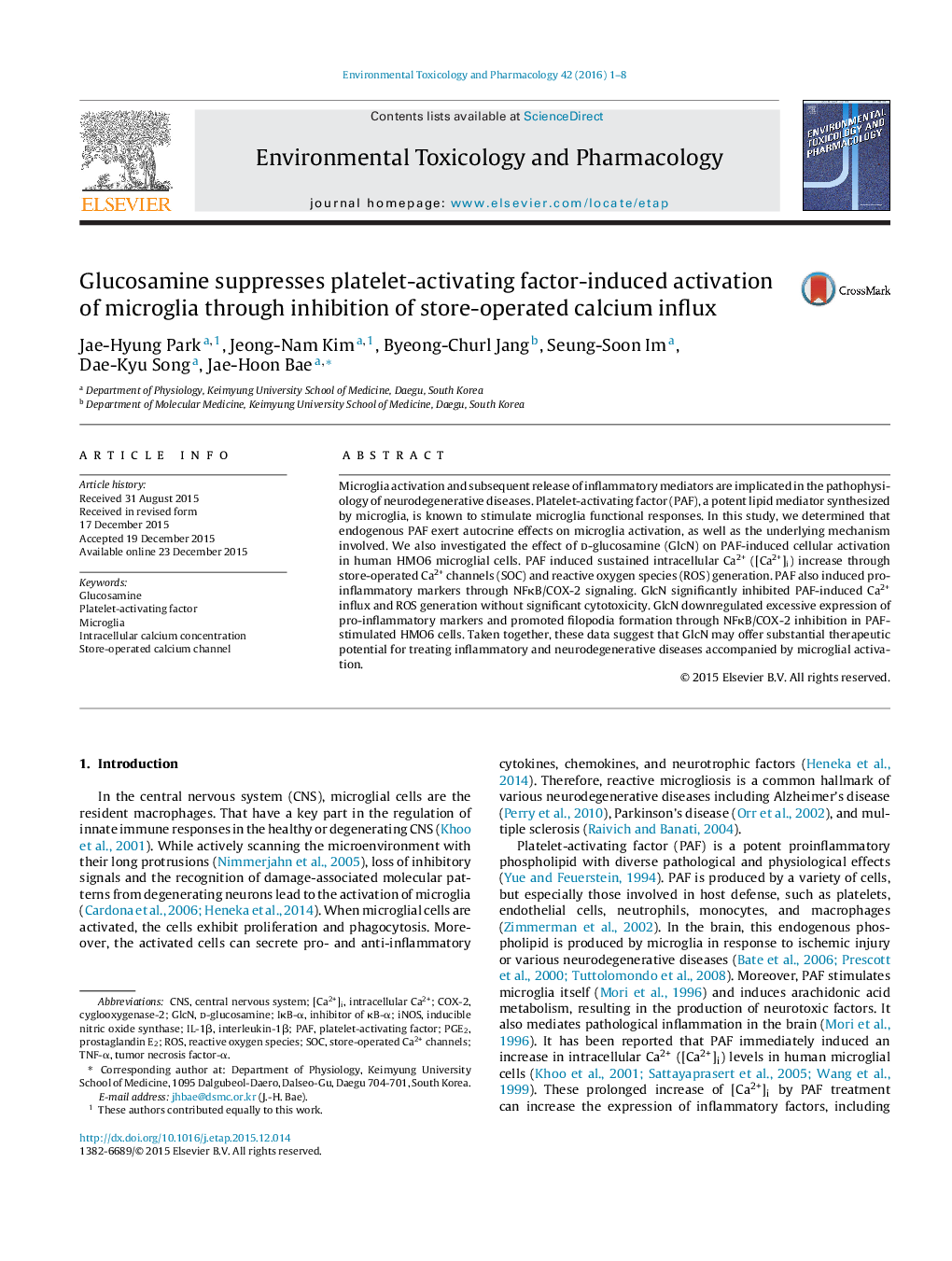| Article ID | Journal | Published Year | Pages | File Type |
|---|---|---|---|---|
| 5848666 | Environmental Toxicology and Pharmacology | 2016 | 8 Pages |
â¢Platelet-activating factor activated microglia through store-operated calcium influx.â¢Inhibitory effects of glucosamine on Platelet-activating factor-activated microglia.â¢Glucosamine inhibited store-operated calcium influx in situ.
Microglia activation and subsequent release of inflammatory mediators are implicated in the pathophysiology of neurodegenerative diseases. Platelet-activating factor (PAF), a potent lipid mediator synthesized by microglia, is known to stimulate microglia functional responses. In this study, we determined that endogenous PAF exert autocrine effects on microglia activation, as well as the underlying mechanism involved. We also investigated the effect of d-glucosamine (GlcN) on PAF-induced cellular activation in human HMO6 microglial cells. PAF induced sustained intracellular Ca2+ ([Ca2+]i) increase through store-operated Ca2+ channels (SOC) and reactive oxygen species (ROS) generation. PAF also induced pro-inflammatory markers through NFκB/COX-2 signaling. GlcN significantly inhibited PAF-induced Ca2+ influx and ROS generation without significant cytotoxicity. GlcN downregulated excessive expression of pro-inflammatory markers and promoted filopodia formation through NFκB/COX-2 inhibition in PAF-stimulated HMO6 cells. Taken together, these data suggest that GlcN may offer substantial therapeutic potential for treating inflammatory and neurodegenerative diseases accompanied by microglial activation.
